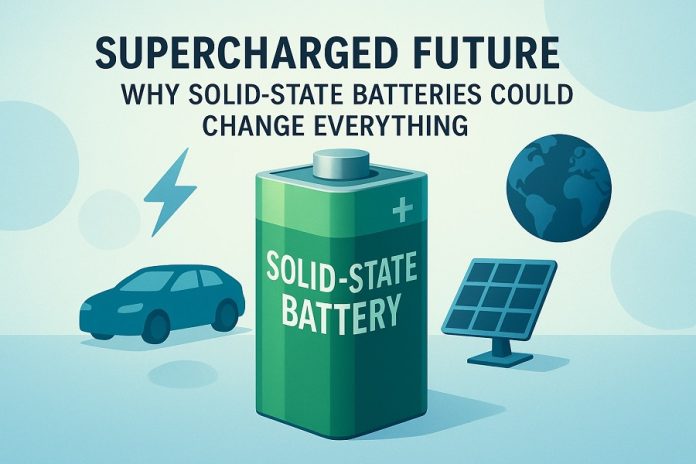
A new type of battery is on the horizon that could make our phones charge in minutes, electric cars drive farther, and even help power space missions.
These are called solid-state batteries, and according to a new review from the University of California, Riverside, they could completely transform the way we store and use energy.
Traditional lithium-ion batteries rely on a liquid inside them to move electricity around.
That liquid can be flammable, break down over time, and limit how fast you can charge the battery. Solid-state batteries, on the other hand, use a solid material instead.
This solid material is much safer, more stable, and lets the battery charge much faster.
In fact, some solid-state batteries can reach 80% charge in just 12 minutes — or even as little as three.
That’s a huge improvement compared to today’s batteries, which often take 30 to 45 minutes. They also run cooler and can last much longer — possibly 15 to 20 years instead of the usual 5 to 8 years for electric vehicle batteries.
Professor Cengiz Ozkan, lead author of the review, says it all comes down to better chemistry and smarter engineering.
By removing the liquid and using solid materials, the batteries can safely handle more electricity, which means faster charging and fewer risks of overheating or catching fire.
The solid material inside these batteries is called a solid-state electrolyte, and there are different types — some are made from sulfides, others from oxides or polymers.
Each type has its own advantages, like being easier to make or offering better performance.
Among them, sulfide-based electrolytes show the most promise because they conduct electricity almost as well as the liquid in current batteries but without the risks.
Scientists are also using advanced tools like neutron imaging and X-rays to see what’s happening inside these batteries as they work.
This helps researchers spot problems, such as areas where lithium gets stuck or dangerous needle-like structures called dendrites start to grow. These can damage the battery or make it fail, so understanding and preventing them is key to making better batteries.
Solid-state batteries are also more efficient at using lithium. Many new designs use a thin layer of lithium metal that holds more energy in less space. That means these batteries could be smaller and lighter, yet still last longer.
They might even help with space exploration. Because they’re stable in extreme temperatures and don’t rely on liquid, they’re ideal for spacecraft and missions to other planets.
While solid-state batteries aren’t ready for mass production just yet, researchers are getting closer.
The UCR team hopes their work will help speed up development so we can all benefit from this exciting technology in the near future.



